Distinguished Lecturers 2021
The NTC is pleased to announce the appointments of Distinguished Lecturers for 2021.
Talks by NTC Distinguished Lecturers can be requested by: IEEE student branches; NTC or member Society Chapters; NTC and member Society Conferences; conferences of other IEEE Societies not members of the NTC for major plenary/keynote (based on availability of funding). Please contact the presenter directly to arrange for a presentation.
| DL Name | Topic(s) |
| Oluwaseyi Balogun* | Nanometrology, Nanothermometry, and Imaging of Low Dimensional Materials using Plasmonic Nanofocusing Approaches |
| Reuven Gordon* | Nanoplasmonics: Reaching Out to the Single Molecule |
| Chengkuo Lee* | Toward 5G based AI + IoT (AIoT) Society Enabled by NanoEnergy-NanoSystem (NENS) Technology |
| Zhang Li* | Magnetic Nanoparticle Swarm for Active Delivery |
| P M (Markondeya Pulugurtha) Raj* | Nanoscale Components and System Integration |
| Jin-Woo Han | 1) Nanomaterials in Printed and Flexible Electronics 2) Nanoscale Vacuum Electronics: Back to the Future? |
| Gwo-Bin Lee | Micro/Nanofluidics for biological applications |
| Elena A. Rozhkova | 1) “Merging Nanotechnology & Synthetic Biology toward Directed Evolution of Energy Materials” 2) “Magnetic Nanostructures for Future Medicine: from Cell Actuation to Ultrasensitive Detection”. 3) “Nano for BRAIN technologies” |
| Han Wang* | Novel Electronic and Photonic Devices based on Low-Dimensional Materials |
| Qing Zhang* | Roles of Semiconductor Junctions in Mechanical-Electrical Power Conversion |
| * Re-appointment for second year. | |
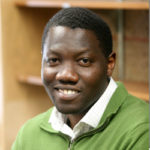 Oluwaseyi Balogun
Oluwaseyi Balogun
Associate Professor of Civil and Environmental Engineering and Mechanical Engineering, Northwestern University
Email: o-balogun@northwestern.edu
Distinguished Lecturer Talk Title: Nanometrology, Nanothermometry, and Imaging of Low Dimensional Materials using Plasmonic Nanofocusing Approaches
Bio:
Oluwaseyi Balogun received the Ph.D. degree in Mechanical Engineering from Boston University in 2006. Between 2006 and 2007, he worked as a Postdoctoral Research Fellow in the Materials Science and Engineering Department at The Johns Hopkins University, and as a Visiting Scientist at the Lawrence Livermore National Laboratory. He joined the Northwestern University faculty in 2008, where he currently holds the position of Associate Professor in the Departments of Mechanical Engineering and Civil and Environmental Engineering Departments. His research interests includes, elastic/acoustic wave propagation in periodic structures, optics-based experimental mechanics methods for materials characterization and imaging, and optical measurement of phonon transport in electronic materials.
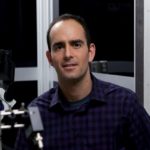 Reuven Gordon
Reuven Gordon
Dept. of Electrical & Computer Engineering, University of Victoria, Victoria, B.C. Canada
E-Mail: rgordon@uvic.ca
Web: www.ece.uvic.ca/~rgordon
Distinguished Lecturer Talk Title: Nanoplasmonics: Reaching out to the Single Molecule
Abstract:
Arthur Ashkin was co-recipient of the Nobel prize in 2018 for his work on optical tweezers; however, those conventional optical tweezers are limited to objects that are >100 nm in size. This talk will review our work on nanoaperture optical tweezers that can trap particles down to the single digit nanometer size, including proteins. I will describe how to measure the low frequency Raman modes of these particles (including proteins and DNA fragments) with high spectral resolution, as well as the THz dynamics of nanoparticles. I will emphasize recent developments in nanofabrication and some exciting biophysical problems we are studying.
Bio:
Reuven Gordon is a Professor in the Department of Electrical and Computer Engineering, University of Victoria. He has received a Canadian Advanced Technology Alliance Award (2001), an Accelerate BC Industry Impact Award (2007), an AGAUR Visiting Professor Fellowship (2009), the Canada Research Chair in Nanoplasmonics (2009-2019), the Craigdarroch Silver Medal for Research Excellence (2011), a Fulbright Fellowship (2016), an NSERC Discovery Accelerator (2017), the Faculty of Engineering Teaching Award (2017) and an JSPS Invitational Fellowship (2020). He is a Fellow of the Optical Society of America (OSA), the Society for Photographic Instrumentation Engineers (SPIE), and the Institute for Electrical and Electronic Engineers (IEEE). Dr. Gordon has authored and co-authored over 170 journal papers (including 13 invited contributions). He is co-inventor for five patents and two patent applications. Dr. Gordon is a Professional Engineer of BC. Dr. Gordon has been recognized as an “Outstanding Referee” by the American Physical Society. He has also served as conference chair for several conferences, including SPIE NanoScience + Engineering and NFO16. Dr. Gordon is an Associate Editor for Optics Express and on the Editorial Advisory Board for Advanced Optical Materials.
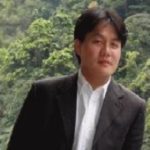 Chengkuo Lee
Chengkuo Lee
Dept. of Electrical and Computer Eng, National University of Singapore, Singapore
Email: elelc@nus.edu.sg
Distinguished Lecturer Talk Title: Toward 5G based AI + IoT (AIoT) Society Enabled by NanoEnergy-NanoSystem (NENS) Technology
Bio:
Prof. Chengkuo (Vincent) Lee received the Ph.D in Precision Engineering from The University of Tokyo, Japan (1996). He is Director of the Centre for Intelligent Sensors and MEMS and Associate Professor of ECE at National Univ. of Singapore. His work focuses on technologies with wide variety of applications in the field of MEMS and NEMS, Photonics, THz MEMS, Energy harvesters, Microfluidics and Biomedical MEMS and NEMS sensors. Prof. Lee has over 300 peer-reviewed journal publications, more than 35 US and Taiwan patents and over 9,700 citations (Google Scholar data), h-index 50 and i-10 index 239. He has held several editor roles, including Associate editor, IEEE Journal of Microelectomechanical Systems (JMEMS).
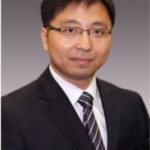 Li Zhang
Li Zhang
Department of Mechanical and Automation Engineering, The Chinese University of Hong Kong (CUHK), Hong Kong, China
E-Mail: lizhang@cuhk.edu.hk
Web: http://www.cuhklizhanggroup.com/
Distinguished Lecturer Talk Title: Magnetic Nanoparticle Swarm for Active Delivery
Abstract:
In nature, various types of swarm behaviors occur, such as a flock of birds and a swarm of ants, which stem from local communications of limited individuals. Through collective pattern formation and reconfiguration, these animals dramatically change their swarming patterns according to the environment they interact with. To date, some large-scale robotic systems can well mimic the complex swarm behaviors of natural creatures through algorithm design and wireless communication (Science, Vol. 345, 795–799, 2014). However, due to the absence of onboard processers, sensors and actuators, to create a robotic system with functional swarm behaviors at the small scales remains challenging.
Recently, my group has developed a strategy that select the optimised magnetic nanoparticle swarms (MNS) in different bio-fluids, such as blood and vitreous humor (Nature Communications, 2019, DOI: 10.1038/s41467-019-13576). The swarms reported may have great potential in medical applications, and this work is an important intermediate step from fundamental understanding of nanorobotic swarms to their clinic applications.
In this lecture, I will present the recent research progress on the design and development of MNS from the following four aspects: (i) controlled generation of reconfigurable swarming pattern; (ii) motion control of the MNS; (iii) selection strategy of the MNS in varied biological fluids; (iv) the perspective of the MNS for biomedical applications.
Bio:
Li Zhang is an Associate Professor in the Department of Mechanical and Automation Engineering (MAE) at The Chinese University of Hong Kong (CUHK). His main research interests include micro-/nanorobotics and their biomedical applications, and functional materials for sensors, actuators and practical applications. Dr. Zhang is a senior member of IEEE, who has won several awards or in the Finalist from IEEE international conferences including ICRA IROS, ROBIO and NANOMED. Since 2004 he has authored and co-authored over 200 papers, including Science Robotics, Science Advances, Nature Communications, TRO and IJRR. He won the Hong Kong Research Grants Committee (RGC) Early Career Award in 2013, and the CUHK Young Researcher Award 2017. He currently serves as an Associate Editor of IEEE/ASME Transactions on Mechatronics (TMECH), IEEE Transactions on Automation Science and Engineering (TASE), IEEE Robotics and Automation Letters (RA-L), and IEEE Open Journal of Nanotechnology (OJNANO).
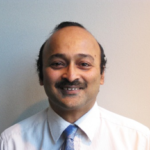 P M (Markondeya Pulugurtha) Raj
P M (Markondeya Pulugurtha) Raj
Biomedical Engineering, Electrical and Computer Engineering
Florida International University, Miami USA
E-Mail: mpulugur@fiu.edu
Distinguished Lecturer Talk Title: Heterogeneous System Component Integration with Nanopackaging
Abstract:
Heterogeneous component integration with seamless and 3D connectivity between digital, RF, analog and passive components in a single package with unlimited bandwidth at lower power is the key to realize future electronic and bioelectronic systems. This talk describes the recent nanomaterial and nanoscale component integration breakthroughs that are making heterogeneous integration a reality. The need for high power density and efficiency in mobile, servers, datacenters and automotive electronics is driving advanced packaging technologies for single-stage power conversion close to the active devices. Power passive component (inductors and capacitors) integration is the biggest bottleneck to realize such integrated power modules. Nanomagnetic inductors, high surface area nanocapacitors and innovative 3D component designs will be described. The second part focuses on material and component integration technologies for high-bandwidth 5G-6G communications. Several packaging advances are critical to realize such mm wave to THz communications. These include high-gain antenna arrays in a package with integrated power dividers and combiners, low-loss THz interconnects with substrate-integrated low-loss waveguides, integrated electromagnetic interference isolation structures between power amplifier (PA) and low-noise amplifier (LNA) interconnects and integrated nanomagnetic and nanodielectrics for nonreciprocal and tunable components. The last part of the presentation describes nanopackaging technologies to enable bioelectronic systems with seamless integration between neural recording arrays, active devices and wireless interfaces for ultra-miniaturized wearable and implantable bioelectronic systems. Nanoscale packaging for off-chip interconnections, thermal management, hermetic coatings and encapsulations will also be highlighted.
Bio:
Dr. P. M. Raj ‘s expertise is in packaging of electronic and bioelectronic systems, with emphasis on nanoscale RF, power and bioelectronic components, and active and passive integration in ultrathin embedded modules. He is an Associate Professor in BME and ECE at Florida International University, and Adjunct Professor at Georgia Institute of Technology, Atlanta. He demonstrated several electronic packaging technologies, working with the whole electronic ecosystem, which include several semiconductor, packaging and material, tool, and end-user companies. He co-lead the development of world’s first 3D glass LTE diversity module, and 3D glass antenna-integrated package module for 5G mm wave applications. He developed advanced substrate-integrated power inductors and power capacitors for integrated power modules and voltage regulators. His research led to 330 publications, which include 8 patents. He received more than 25 best-paper awards. He co-advised more than 30 MS and PhD students who are current leaders and technology pioneers in the electronic packaging industry. He is widely recognized for his contributions in integrated passive components and technology roadmapping, component integration for bioelectronic, power and RF modules, and also for promoting the role of nanomaterials and nanostructures for electronics packaging applications through IEEE NTC and EPS. He received his PhD from Rutgers University in 1999 in ceramic engineering, ME from the Indian Institute of Science, Bangalore and BS from the Indian Institute of Technology, Kanpur (1993).
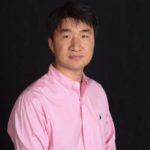 Jin-Woo Han
Jin-Woo Han
NASA Ames Research Center, California, USA
E-Mail: jin-woo.han@nasa.gov
Distinguished Lecturer Talk Title: Nanomaterials in Printed and Flexible Electronics; Nanoscale Vacuum Electronics: Back to the Future?
Abstract:
Nanomaterials exhibit interesting electrical, mechanical, optical, magnetic and other properties, allowing improved performance and reduction in size and power consumption in a range of applications. There has been tremendous progress worldwide in exploiting nanomaterials in electronics, sensors, composites and many others. Device fabrication has mostly followed traditional semiconductor fabrication approach, requiring clean room processing and expensive equipment. The game has recently started to change with the emerging of the Internet of Things, which has created the need for inexpensive, flexible devices for several applications. Thus, many of the devices can be printed now on polymer, paper, textile and other flexible unconventional substrates using appropriate conducting, semiconducting and dielectric inks. We have demonstrated printed gas sensors, radiation sensors, supercapacitors, triboelectric nanogenerators (TENGs), resistive random access memory (RRAM) devices, heat therapy pads, physically unclonable function (PUF) for authentication and others. Nanomaterial inks for conducting (Ag, Cu) and semiconducting (CNTs, graphene, oxides) layers were employed in a variety of printing techniques. In all these applications, we have attempted end-to-end printing including printing the substrate and the final encapsulation layer for packaging. This talk will provide an overview of the above-demonstrated applications, discuss the results and future outlook for advancement.
Bio:
Jin-Woo HAN has been at NASA Ames Research Center for over 10 years and he is currently a Senior Research Scientist. He has fabricated a wide variety of nanodevices with outstanding performance by combining the unique properties of nanomaterials and nanoscience and the time-tested microfabrication techniques, thus delivering products in a quick time frame. He pioneered the field of nanoscale vacuum tubes/transistors in 2012 when he published a landmark paper in APL showing ~ 0.5 THz performance; he has been making major contributions to printed/flexible memory, sensors and energy storage devices. He has shown exceptional creativity in the development of these innovative devices.
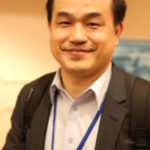 Gwo-Bin Lee
Gwo-Bin Lee
National Tsing Hua University, Taiwan
E-Mail: gwobin@pme.nthu.edu.tw
Distinguished Lecturer Talk Title: Micro/Nanofluidics for biological applications
Abstract:
Systematic Evolution of Ligands by Exponential Enrichment (SELEX), which is based on selection of target-specific single-stranded DNA (ssDNA) aptamers through repeated incubation, isolation and amplification, has attracted considerable attention in the last decade. However, the benchtop protocol for ssDNA aptamers screening is relatively lengthy and labor-intensive. Furthermore, it requires welltrained laboratory personnel and consumes a relatively large amount of expensive samples and reagents, which may hinder its practical applications. Our team has exerted much effort to establish integrated nanofluidic and microfluidic platforms to automate the SELEX screening processes using proteins, viruses, bacteria, cancer cells and even tissue samples as the targets in the past 10 years. These automatic screening platforms offer several advantages over the existing bench-top systems in the aspects of sample and reagent consumption and processing time. Furthermore, they have a better chance to identify affinity reagents since the “dead-volume” issues have been properly addressed in the integrated microfluidic systems and non-specific contaminants can be significantly reduced. In this talk, I will introduce the state-of-the-art process on this platform and its applications for fast diagnosis of infectious diseases, cardiovascular diseases and cancers.
Bio:
Prof. Gwo-Bin Lee is renowned globally as a pioneer in exploring fundamental microfluidics phenomena since the 2000’s and is currently recognized as a top leader developing advanced biochips in Taiwan. Over that past 20 years, his team has developed integrated microfluidic and nanotechnology systems capable of automating complicated bioprocesses on biochips for a variety of biomedical applications, including efficient screening of biomarkers (affinity reagents), fast diagnosis of infectious diseases and electromagnetic thermotherapy of tumors.
 Dr. Elena A. Rozhkova
Dr. Elena A. Rozhkova
Argonne National Laboratory, IL, USA
E-Mail: rozhkova@anl.gov
Distinguished Lecturer Talk Title(s):
1) Merging Nanotechnology & Synthetic Biology toward Directed Evolution of Energy Materials
2) Magnetic Nanostructures for Future Medicine: from Cell Actuation to Ultrasensitive Detection
3) Nano for BRAIN technologies
Abstract:
The biological use of solar energy for synthesis of fuels from water and carbon dioxide inspires researchers and engineers in their efforts to replace exhaustible energy sources with renewable technologies. Environmentally friendly schemes of photocatalytic energy conversion, known as artificial photosynthesis, along with inorganic materials, also use biological structures, such as molecules, enzymes, machineries of whole microorganisms capable of light-harvesting, water splitting, carbon dioxide and proton reduction. In this talk, I will make an argument that merging nanotechnology, biotechnology and synthetic biology approaches allows for systemic manipulation at the nanoparticle−bio interface toward directed evolution of energy materials, novel environmentally friendly catalytic, “artificial life” systems and, ultimately, to circular economy. For example, purple membranes isolated from Halobacteria cells or, more recently, obtained via cell-free synthetic biology approaches, were integrated with TiO2 nanoparticles to produce hydrogen or reduce carbon dioxide. These new functions are not typical of the host microorganism. On the other hand, interplay between plasmon resonance of photonic (Au, Ag) nanoparticles and natural mechanisms of the same light-sensitive membranes in engineered hollow hybrids, or “artificial cell”, resulted in ATP photosynthesis.
Bio:
Dr. Rozhkova earned her Ph.D. in Chemistry at the Moscow State Institute for Fine Chemical Technology. She then worked in Japan as a postdoctoral fellow of Japan Society for Promotion of Science at Tohoku University. After moving to the US in 2003, she became a research staff member at the Chemistry Department of Princeton University, and later she moved to Chicago. Since joining the Center for Nanoscale Materials at Argonne National Laboratory in 2007, Elena has focused on a general theme of nano-bio interfaces, one of the most exciting interdisciplinary research fields of our time. Success in this area can lead to the solution of emerging problems of civilization, for example, to provide alternative sustainable energy, to advance medical technologies in the diagnosis and treatment of incurable diseases.
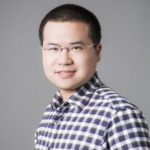 Han Wang
Han Wang
Robert G. and Mary G Lane Early Career Chair Professorship
Department of Electrical and Computer Engineering
University of Southern California
E-Mail: han.wang.4@usc.edu
Web: http://hanw.usc.edu
Distinguished Lecturer Talk Title(s):
1: Black Phosphorus and Perovskite Chalcogenide Materials for mid-IR Detection and Imaging
2: Emerging Low Dimensional Material Electronic Devices for Memory and Computing
Abstracts:
1: Black Phosphorus and Perovskite Chalcogenide Materials for mid-IR Detection and Imaging: Recent progress in new narrow bandgap material discovery such as black phosphorus (BP) and perovskite chalcogenide materials including barium titanium sulfide (BaTiS3) open the door to a new generation of photonic materials for mid-infrared sensing and imaging. High mobility, narrow gap BP and BaTiS3 thin film have shown promising properties for mid-infrared and long wavelength infrared optoelectronics. Furthermore, their low-symmetry crystal structures allow for the realization of polarization sensitive electro-optical detection in the mid-infrared range. Here, I will present our work in understanding the fundamental electronic and optical properties of BP and BaTiS3, including using the scanning ultrafast electron microscopy technique to obtain spatial-temporal imaging of the real-time carrier dynamics. Our recent demonstration of polarization sensitive mid-IR detector and the development of mid-IR focal-plane array will also be presented. Technological potential and future impacts of these novel mid-IR materials and devices will be discussed.
2: Emerging Low Dimensional Material Electronic Devices for Memory and Computing: Low dimensional materials offer a rich array of unique physical properties that are promising for developing a new generation of electronic devices for beyond von-Neumann computing hardware. In this talk, I will discuss our recent work in developing atomically-thin resistive memory devices based on low dimensional materials that can achieve ultralow power operation at the sub-femtojoule level. Our work on developing low dimensional material based phase transition oscillatory neuronal devices will also be discussed. Due to their atomically confined geometry, such oscillatory devices exhibit pronounced stochastic feature with dynamically tunable distribution parameters closely resembling biological neuron spiking. Furthermore, the demonstration of the low power hardware implementation of new computing schemes such as Boltzmann machine and stochastic Hopfield network based on these novel devices will be presented.
Bio:
Han Wang is an Associate Professor in the Department of Electrical and Computer Engineering at the University of Southern California and the holder of the Robert G. and Mary G Lane Early Career Chair. His research interests include the fundamental study and device innovation in electronics and photonics technology based on emerging nanomaterials for sensing, computing and energy applications. His work has been recognized with numerous awards including the IEEE Nanotechnology Council Early Career Award in 2019, the Army Research Office Young Investigator Award in 2018, the National Science Foundation CAREER award in 2017, USC Viterbi Junior Faculty Research Award in 2018, the IEEE International Electron Device Meeting (IEDM) Roger A. Haken Best Paper Award in 2012, Massachusetts Institute of Technology Jin-Au Kong Best Doctoral Thesis Award in 2013, and the Best Paper Award in International Conference on Compound Semiconductor Manufacturing Technology (CS MANTECH) in 2010.
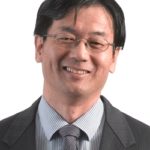 Qing Zhang
Qing Zhang
School of EEE, Nanyang Tech Univ, Singapore
Email: eqzhang@ntu.edu.sg
Distinguished Lecturer Talk Title: Roles of Semiconductor Junctions in Mechanical-Electrical Power Conversion
Abstract:
Recent advance in DC electric generators has demonstrated that the new generators are of several advantages over traditional electric generators that are well known to us. In these new generators, DC electric power is converted from mechanical power through either semiconductor junction modification by mechanic impact or dynamic junction by sliding one semiconductor/metal electrode on the other. The short circuit current is determined by generation rate of electrons and holes at the contacted surfaces, while the open circuit voltage is determined by the chemical potential difference of the two electrodes. In the talk, I shall review recent advances in the generators and discuss the mechanisms of electron/hole generation and transport in the devices. Advances in fundamental semiconductor physics and perspectives and technical challenges will be highlighted.
Bio:
Qing Zhang is an associate professor in the School of Electrical and Electronic Engineering, Nanyang Technological University, Singapore. His research interests include carbon based materials and electronic devices and carbon/silicon related thin films, etc. Currently, his attention focuses on carbon nanotube based devices and fundamentals, CVD diamond and diamond-like carbon films based devices, etc. He has published 170 peer-review scientific papers in pre-eminent journals and presented his research results in 150 conferences and workshops. He is a fellow of Singapore-MIT alliance. He is the chairman for Symposium of Nanodevices and Nanofabrication in International Conference on Materials for Advanced Technologies (ICMAT) 2005, ICMAT 2007, ICMAT2009 and ICMAT2011.
[11-Nov-20]
